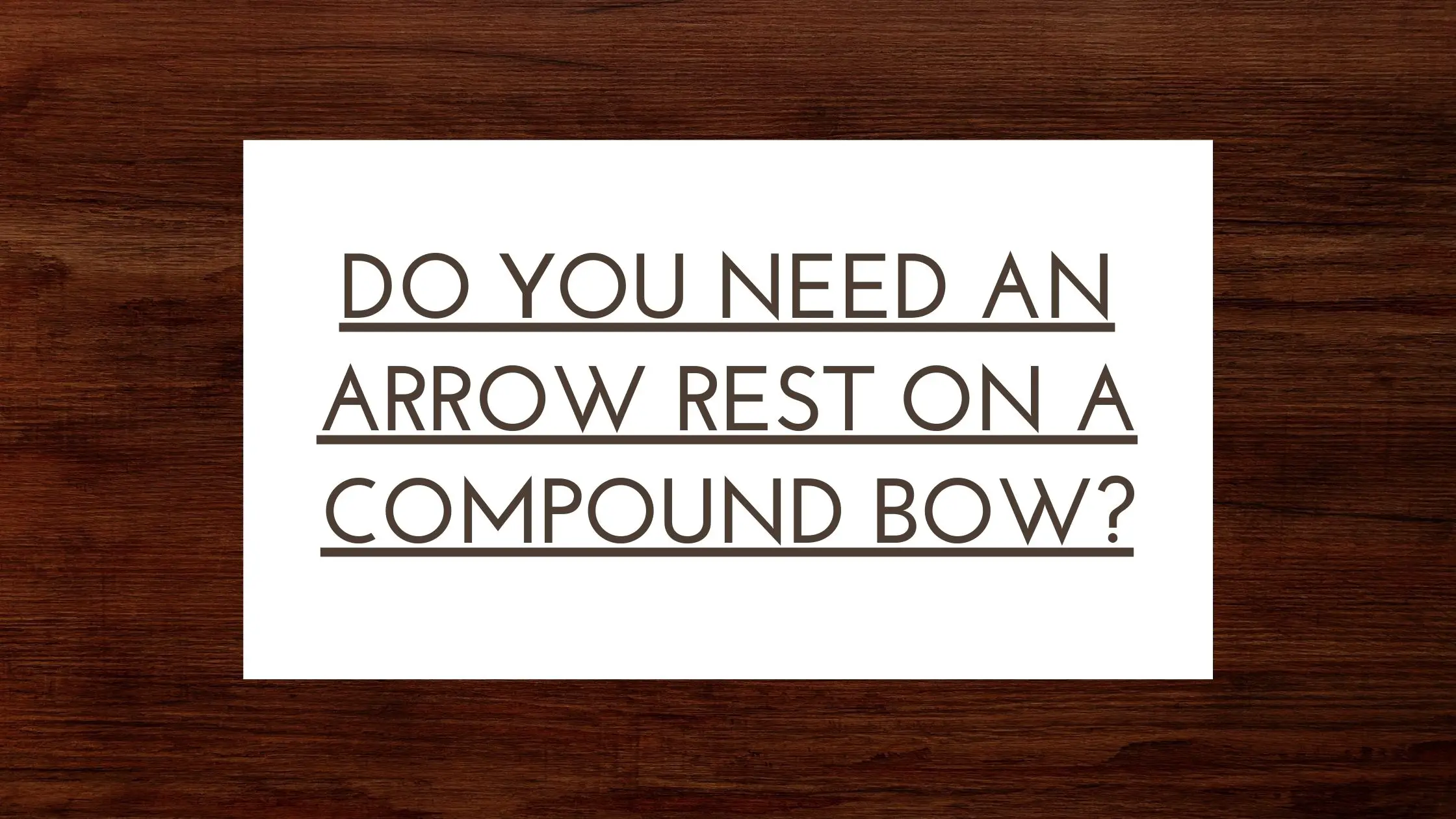Do You Need an Arrow Rest on a Compound Bow?
On the market, it is possible to find a wide variety of arrow rests designed for various applications. You might be wondering what the differences between compound archery and traditional archery are, especially if you are new to compound archery.
It can be very frustrating for both target archers and hunters if they are unfortunate enough to choose the wrong arrow rest for their bows.
We hope this article will help you to make a good choice when choosing the rest for your arrow, but please be sure to speak to other archery club members to see what they use as much as possible.
Also recommended:
Which arrow rest is best and why?
Generally, an arrow rest is attached to the side of the bow and helps keep the arrows positioned consistently at their target. Depending on the type of rest, there can be adjustments to the rest.
You can easily fine-tune your perfect setup by moving your hand up, down, left, right, and left. As you draw back your bow, you can also use the rest to hold the arrow in place as you draw it back.
This is especially useful for beginners, shooters who use the wind in their favor, or those who are shooting archery with extreme angles, such as the in-field. Depending on the style and price, there can be a great deal of variation, which makes choosing the right one a bit challenging.
Different arrow rests
We often talk about shoot-through arrow rests when archers talk about compound arrow rests.
It is common for archers to use recurve arrow rests called side pressure. The side pressure arrow rest is a type of arrow rest that some compound archers prefer. We wanted to discuss both options to ensure you have all the information you need to make an informed choice.
Side pressure
Generally speaking, recurve bows are equipped with these arrow rests as this type of arrow rest is normally found on them. With the canted rest of these arrows, the arrow is pushed to one side by gravity, which causes the arrow to rest on one side of the rest.
To ensure that the arrow doesn’t hit the riser when archers use this type of arrow rest (if you are right-handed), they have to point the arrow to the left while using it.
The result of this paradox is that the archer’s arrow flexed around the riser as he fired the arrow, thus giving the archer’s paradox its name.
Shoot Through
Shoot-through arrow rests are usually used by a large majority of compound archers. With the installation of shoot-through arrow rest, you won’t have to draw the arrow at an angle for it to function properly.
Your arrow needs to be centered on the string. Hence, you do not need to tune the plunger as you do not need one at all. Therefore, you do not need to tune the plunger at all.
Unlike arrow rests made of metal, shoot-through arrow rests have a large window that allows clear access to the arrows.
Moreover, shoot-through arrow rests are generally more forgiving since the arrow doesn’t bend around the bow’s riser when it hits the rest. This means that minor inconsistencies will not affect the clearance of the arrow and thus won’t cause any problems.
Arrow Rests for Compound Bows.
It is important to consider what you will do with your bow before choosing an arrow; rest it when you choose one for your bow. There are differences between the needs of bowhunters and target archers, for example.
When in hunt mode, bowhunters must go through various inclement weather conditions and stalk through vegetation that will grab their arrows.
On the other hand, the target archer’s focus is solely on achieving the greatest possible accuracy when shooting. There are three main categories in which compound bow arrow rests can be categorized in the market today.
Launcher Style
It has been a long time since these rests were available on the market. The arrows of some are supported by a pair of prongs, while those of others are supported by a thin blade that is affixed to the arrow.
The rests provide continuous support for the arrow while it is being drawn or released, which is a considerable amount of time for the arrow to pass through the bow and exit it.
Bowhunting prong rests used to be the only rests used by bowhunters and still are the standard among bowhunters today, whereas target archers prefer blade rests since they have been a favorite for a long time.
Due to their ease of setting up and minimal contact with the arrow, these rests are popular with both groups, thanks to the fact that they are easy to use and aid in consistent performance on every shot.
Containment Style
As far as the most well-known rest of this type goes, the Whisker Biscuit is probably the most famous, but there are several others.
In addition to the nylon bristles, these rests are also equipped with a full circle of individual guides made from various materials designed to hold the arrow in place when it is knocked, keeping it in place when it is knocked.
The difficulty of knocking the arrow off the rest of the rest is high once the arrow has been captured. These weapons are popular with bowhunters because of their simplicity, durability, and near-foolproof nature.
Drop Away
Recent years have seen rapid growth in demand for drop-away rests. During the draw cycle, this rest supports the arrow throughout the process and then drops out of the way during the shot, as its name implies.
In a traditional bow rest, the arrow is guided by the rest during the first few inches of its flight, and after the string is released, the rest drops away, leaving the arrow without any contact with the rest. Three basic types of drop-away can be found on the market.
In addition, some rests are driven by limbs, which are connected to rests by stringing a cord between their ends. A cord that runs through the bow rest is what keeps it flat against the shelf when the bow is at rest.
The archer at full draw needs to support the arrow with the rest where it pops up as he draws and the limb flexes. An arrow’s rest is pulled out of the way by the cord when it is released from the string, causing it to exit the rest.
Final Words
The arrow resting on a compound bow is a controllable device that keeps the arrow in place while it travels down the shooting lane. It’s important you need an arrow rest on a compound bow.
It is important to consider what compound bow you are using and how comfortable you are in regular archery before settling on a specific type of arrow rest. Understanding your traditional archery experience and how it applies to compound archery will help you determine which arrow rest should be used for your application.




![2024 Best Broadheads For elk: [Fixed and Mechanical]](https://outdoorsportshub.com/wp-content/uploads/2022/12/best-broadheads-for-elk-2-min-768x432.jpg)


